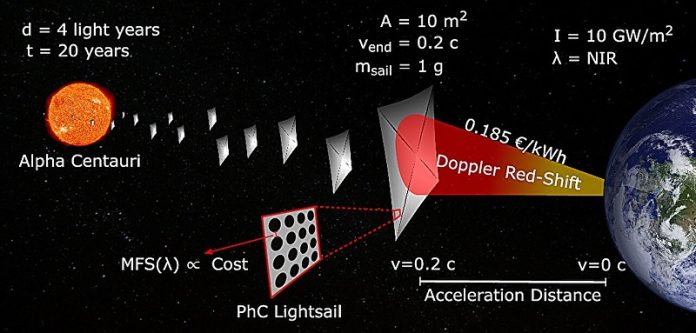
Scientists have taken an exciting step toward sending tiny spacecraft to other stars.
A team from Brown University in the U.S. and TU Delft in the Netherlands has created a super-thin, super-reflective material called a lightsail.
This lightsail could one day ride on beams of laser light and travel through space at incredible speeds.
Right now, space travel is very slow. NASA’s Voyager 1 spacecraft, launched in 1977, has traveled over 15 billion miles—but that’s not even 1% of the distance to Alpha Centauri, the star closest to our solar system.
To reach other stars, we need faster ways to travel.
That’s where lightsails come in. These are thin, shiny membranes that work like sails on a boat. But instead of wind, they are pushed by light.
If powered by lasers from Earth, lightsails could help spacecraft reach nearby stars in just 20 years instead of thousands.
The team’s new lightsail is only 200 nanometers thick—that’s thousands of times thinner than a sheet of paper!
Yet it is 60 millimeters (about 2.4 inches) wide and long. This super-thin sail is made of silicon nitride, a lightweight and strong material.
To make it both lighter and more reflective, the scientists added billions of tiny holes—each smaller than the wavelength of light. These holes help reduce the weight and increase how much light it can reflect, which is key for speed.
The design process was led by Miguel Bessa at Brown and Richard Norte at TU Delft. Bessa’s team used a new artificial intelligence method to figure out the best pattern of holes to make the sail as efficient as possible. Then, Norte’s team developed a new way to build the sail quickly and cheaply.
They used a special gas-based process to remove extra material under the sail, leaving only the delicate membrane. The process is much faster and cheaper than older methods, which could take years and cost a lot. Now, it takes just one day and is thousands of times cheaper.
This new lightsail has the highest “aspect ratio” ever—meaning it’s very large in size compared to its tiny thickness.
It’s also a big step forward for projects like the Breakthrough Starshot Initiative, which wants to send small spacecraft to Alpha Centauri using laser-powered sails.
The researchers believe their work could open the door not just to space travel, but to solving other tough engineering problems. As Bessa said, “This is just the beginning. We might now be able to solve problems that seemed impossible before.”



